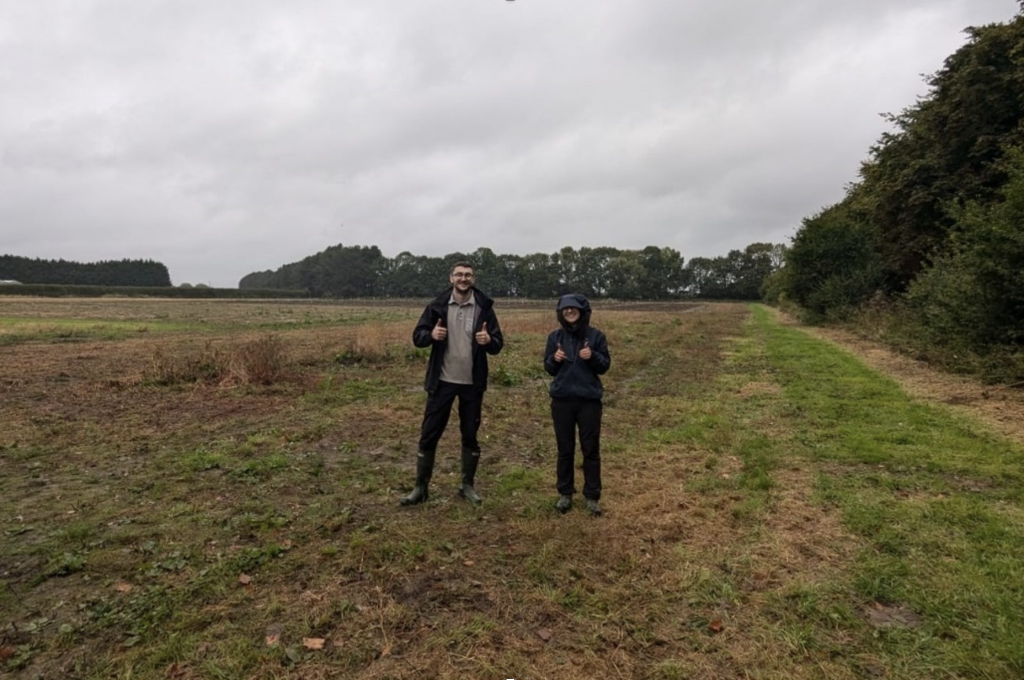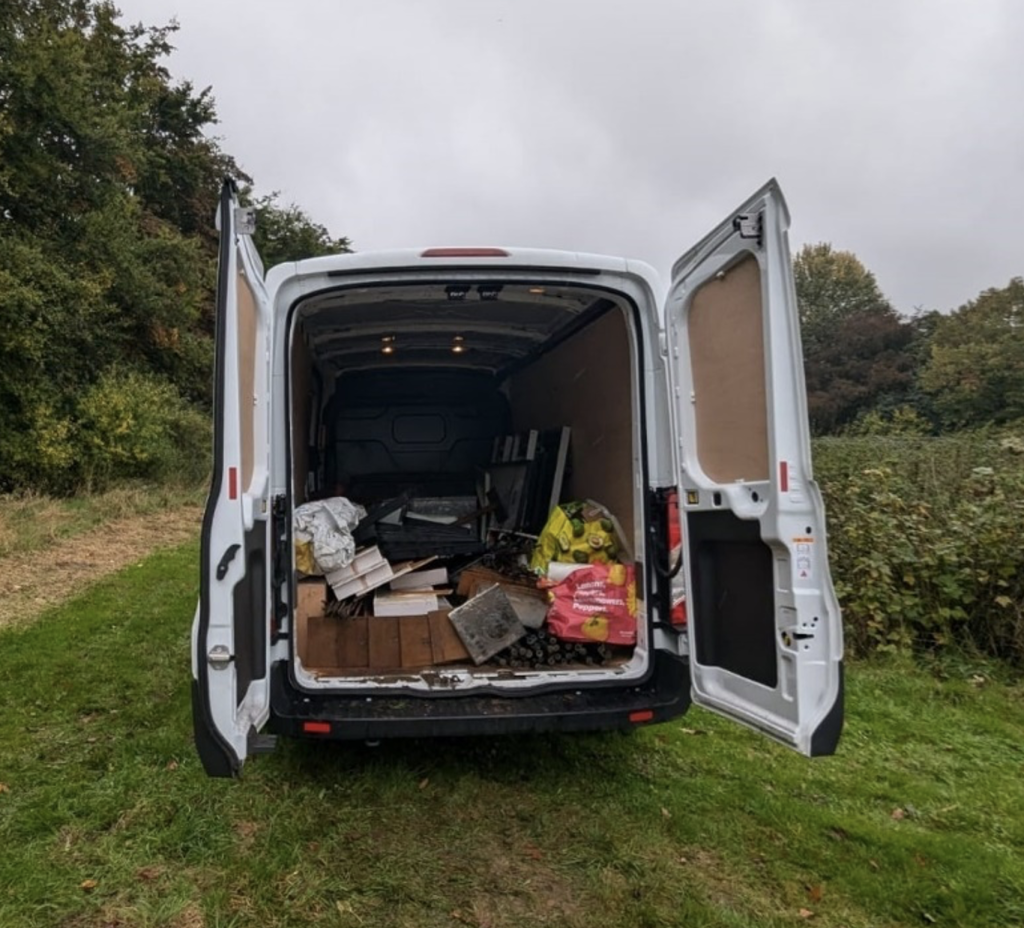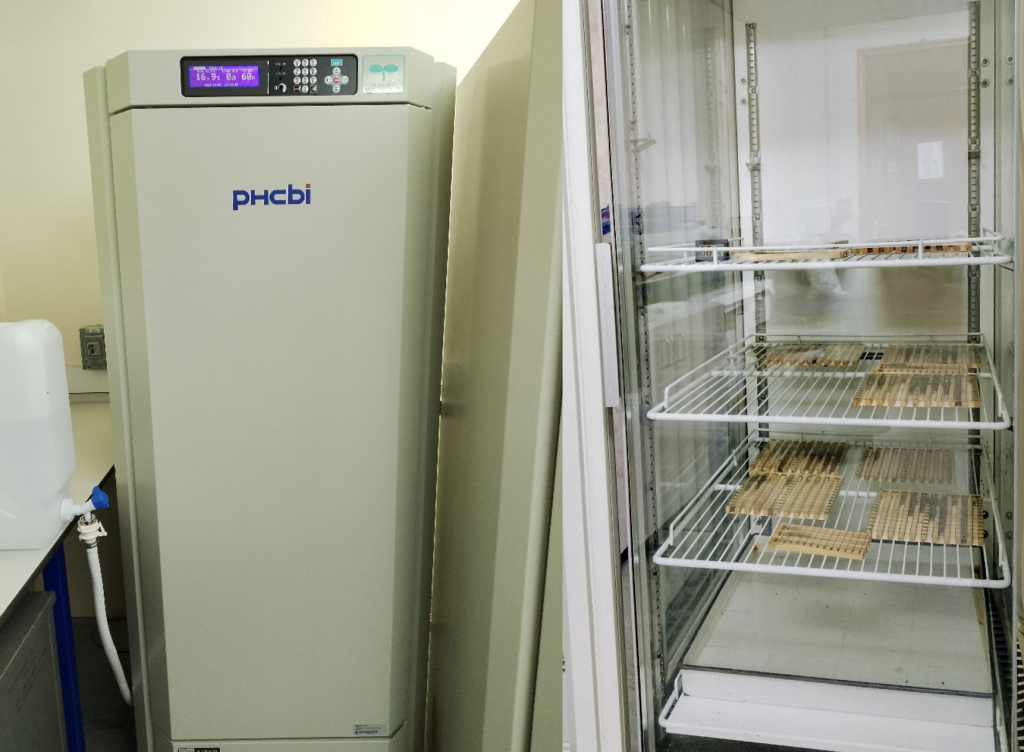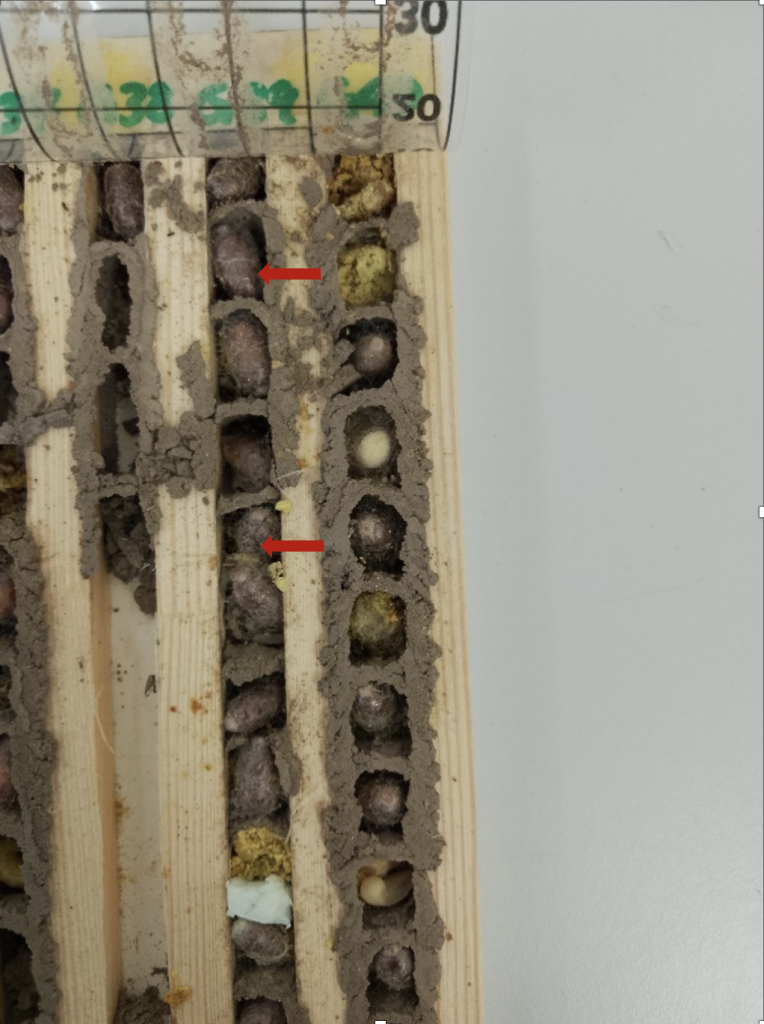
Autumn is approaching, which means that fieldwork is coming to an end! With the weather getting colder and wetter, it was time to transfer the cocoons to the lab, where they will be protected from weather hazards such as heavy rain.
We chose a particularly rainy and gloomy day to pack up all the equipment we had put out in the spring, but we made it thanks to a great team effort. And fortunately, everything fitted into the van!

We made sure that the site was returned to its original condition. Thank you, Stockbridge Technology Centre, for letting us use your field for our experiment!
We transferred the cocoons in their wooden nesting blocks to three culture chambers (one for each temperature treatment) in our lab at the University of Hull (Picture 3). The chambers have regulated temperature and humidity levels and are perfect to host larvae and cocoons while we collect the last bit of data before overwintering.

Most larvae have fully formed cocoons, but some are still spinning their cocoon (Picture 4, red arrows). We are therefore continuing to keep a close eye on the nesting blocks, to record the date of completion for each cocoon. Now fieldwork has come to an end, this lab work will give us important information on potential differences in development time between the three temperature treatments.

